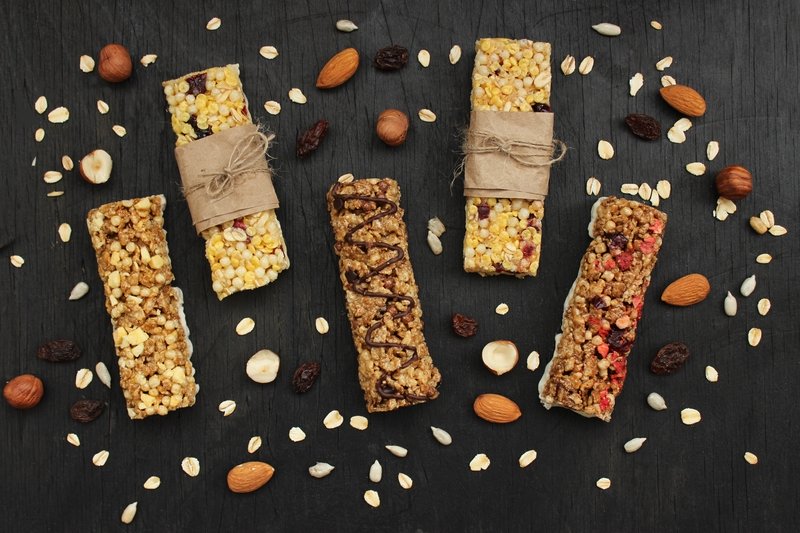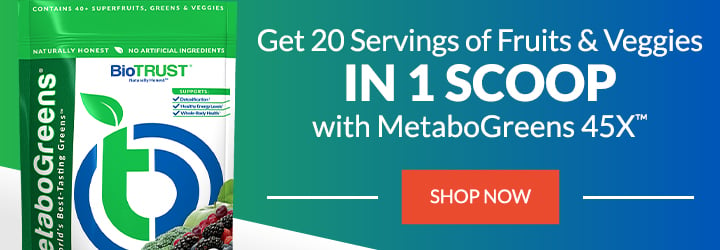Avoid These 8 Fake “Healthy Foods” Immediately

So, you decided to turn over a new leaf and incorporate more “healthy” foods into your diet. You load up your cart with fresh fruits and vegetables, but then get sidetracked by bright and colorful labels popping off of what I like to call “diet saboteurs.” That is, foods that claim to be “healthy,” “lite/light,” or “low fat,” to name a few, but in reality, are wolves in sheep’s clothing. Below are my top 8 fake healthy foods that you must avoid immediately. Buyer beware!
Disclaimer: Remember, the “value” of any food has to be considered in the context of a person’s overall diet, including the total balance of calories, protein, fat, and sugar consumed throughout the day. Plus, please don’t forget the calories you burn with your exercise and physical activity also matter. So, let go of dietary dogma and focus on nourishing your body. Just be aware that some foods that claim to be healthy really aren’t.
Now, onto my personal list.
8 Fake Healthy Foods You Must Avoid
1. Sports Drinks
Of the most well-known electrolyte sports drinks are Gatorade® and Powerade®. These specialized beverages are intended to replace crucial electrolytes and carbohydrates while hydrating at the same time. This type of beverage is ideal for those who engage in prolonged, vigorous physical activity for more than an hour, especially in hot conditions.
Studies have shown that hard-training athletes should consume carb-heavy drinks to ensure muscles receive adequate amounts of energy. Unfortunately, a vast majority of those consuming these types of sports drinks are not engaging in anywhere close to the amount of physical activity needed to experience any benefit.
Looking at sugar content alone, most are comparable to your average candy bar or 12-ounce soda. As a result, many electrolyte sports drinks fall into the category of sugar-sweetened beverages due to their various forms of added sugars. This makes them a leader in the fake healthy foods category.
Most of us can simply rehydrate with good old water combined with a healthy diet filled with vegetables and fruits to provide electrolytes.
2. Yogurt
While dairy (e.g., Greek yogurt, cottage cheese, kefir, etc.) may be a healthy option, it’s important to differentiate plain, unflavored options from fruit-flavored options. Generally speaking, you’ll find about twice as much sugar in the latter.
While you might think that’s naturally-occurring sugar, the truth is you’re likely to find added sugar as the second ingredient (after milk). That means there’s more added sugar than the naturally-occurring sugar from the fruit and milk.
And if you don’t find added sugar, there’s a good chance there are artificial sweeteners and fillers, which have negative effects of their own.
Instead of reaching for a “fruit”-flavored option that places it squarely on the fake healthy foods list, choose your favorite plain yogurt (organic preferred)—or even make your own—and then add sliced fruits or berries and maybe a touch of stevia or favorite sugar substitute if you want some added sweetness.
3. Dried Fruits
On a low-carb diet, it’s generally recommended that people should limit their daily fruit intake to 30 grams of carbs per day. That’s what’s found in about one banana, one apple, or two cups of berries, etc. And truth be told, fresh fruit contains a lot less than what’s found in the typical serving of dried fruit. For example, one cup of fresh cranberries contains 4 grams of sugar, and one cup of dried cranberries contains a whopping 70 grams.
What gives?
Most dried fruits have significantly more sugar—double, triple, and even more—than the sugar content of fresh fruit. And many packaged dried fruits are spiked with even more sugar. Sugar, in case you hadn’t heard, has wreaked havoc on a lot of people’s health and wellness. Dried fruits can also contain added oils, preservatives (e.g., sulfur dioxide, which many people are sensitive to), and artificial sweeteners and flavors.
These additives are found mainly in just the prepacked stuff, though. If you have a dehydrator and make your own, I can get down with that.
In other words, go for fresh fruit or dehydrate your own fruits if you want to preserve them. But even then, realize that most dried fruits are a classic example of fake healthy foods.
4. Fruit Juice
SAY IT WITH ME: Store-bought fruit juice is not the same as fresh fruit. Fruit juice contains both more calories and sugar than its whole-fruit counterpart, and it’s also lower in fiber. For instance, a single medium-sized orange contains about 60 calories and 15 grams of carbohydrates, with 3 grams of fiber and 12 grams of sugar. An 8-ounce glass of orange juice, on the other hand, contains double the sugar, no fiber, and nearly twice as many calories. What’s more, you could down that glass of juice in less than half the time it takes to eat an orange.
Just because the label has the word “fruit” on it does not mean it is healthy. Stay away—fruit juices are fake healthy foods! And fill up on fresh, whole fruit instead for all of the nutrients and fiber it delivers.
5. Protein Bars
I get it, you are crunched for time, so you run into the gas station on your way to work and see the word protein on a prepackaged bar, brownie, cookie, etc. and think, “Man, this is a great ‘healthy’ option.” I mean, they are right next to candy bars, and one would assume, by comparison, they are a better choice.
WRONG.
Unless you are consuming a BioTrust Protein Brownie, you could be making a horrible choice. Most of these popular brands of protein snacks are just glorified candy bars loaded with sugar, fillers, and artificial ingredients. I don’t want to call anyone out, but I stopped at my local gas station just this morning and grabbed a random protein bar and a random candy bar and flipped them over.
The calorie content of the protein bar was 230. The calories in the candy bar were 250, which, okay, isn’t a significant difference.
But I should mention that calories are just one of the things to consider when you’re choosing your food; there are other more important factors. Other than a few more grams of protein, these two items were fairly similar. Now don’t get me wrong, I am not telling you to opt for a candy bar, but do be mindful of these “protein bars” that seem too good to be true. They probably are.
Protein bars are often just ultra-processed fake healthy foods. And you know our mantra around here—eat a mostly whole-food, nutrient-dense-based diet. So, if you know you’re going to be out and about, have a plan and bring a healthy snack like fresh fruit and nuts, sliced veggies and hummus, or even a BioTrust Protein Brownie with you.
6. Diet Soda
With zero calories and no sugar, there shouldn’t be any concern about diet sodas when it comes to carbohydrate management and metabolic health, right? Wrong. Multiple studies have shown that consuming artificially sweetened sodas is associated with an increased risk of type 2 diabetes, metabolic syndrome, and obesity.
Drinking diet soda daily has also been associated with an increased risk for dementia (including Alzheimer’s disease) and stroke compared to folks who don’t drink diet soda. Additionally, artificial sweeteners such as aspartame can have neurological effects.
These may lead to imbalanced levels of key neurotransmitters, including dopamine and serotonin. This is interesting because it may also tie into issues like headaches and insomnia that some people experience when consuming diet sodas and other artificially-sweetened products.
And don’t even get me started on these being labeled “diet” so folks assume they are great for weight loss and healthier than a regular soda. When it comes to weight management and diet sodas, you can probably already see the writing on the wall. There is a potential link between artificially sweetened beverages and an increased risk for abdominal obesity because it’s not uncommon for folks to overeat—whether consciously or unknowingly—when they consume diet sodas.
Want a refreshing drink? Reach for water with some sliced fruit or berries, unsweetened ice tea, or calorie-free sparkling water instead.
7. Granola
While granola, which at its very base is nuts and oats, can be quite a healthy and tasty treat, most commercial preparations (including organic versions) are rife with refined grains, sugary ingredients, and inflammatory oils.
What’s more, granola can be a very calorie-dense option, and the serving size is often much smaller than what most folks consume.
For instance, one popular organic brand contains 5 different sugary ingredients contributing 14 grams of sugar per half-cup serving. In addition, you can also find sunflower oil on the label, and this refined oil is high in inflammatory omega-6 fatty acids.
If you’re craving granola, the simplest solution is to just make your own.
8. Trail Mix
Most store-bought trail mixes—even those organic, “healthy” versions—can take a hike! (Pardon the pun.) Along with nuts (typically peanuts), most trail mix combines dried fruit (sometimes “yogurt” covered) with some type of chocolate (though you won’t find low-sugar dark chocolate most of the time). In other words, traditional trail mix provides a heavy dose of added sugar (often plenty of it) and then topped with unhealthy refined oils.
It’s not uncommon for a mere half cup of trail mix to contain upwards of 30 grams of sugar. And yes, that includes organic trail mix. (FYI, when it comes to your body, organic sugar is still sugar.)
What’s more, trail mix is a very calorie-dense snack due to the concentrated sources of fat (e.g., nuts) and sugar (e.g., dried fruit, chocolate). For instance, that same half cup of trail mix packs over 300 calories, which adds up to more fat, sugar, and calories than ice cream. What’s more, most people have trouble controlling portion sizes when it comes to these fake healthy foods.
So, what can you take on your next hike? How about these tasty flourless trail mix cookies? Loaded with taste and nutrition rather than sugar!
Fake Healthy Foods: A Recap
If you didn’t know, now you know that the grocery store is loaded with fake healthy foods, hiding behind big claims and pretty labels. Now you’re armed with information and some simple alternatives to help you, well, have your cake (or rather yogurt, fruit, granola, trail mix, etc.), and eat it too.
Eating healthfully doesn’t need to be about what you give up but rather all of the surprisingly delicious real foods you do get to enjoy. No fake foods (“healthy” or not) required!





 7 Signs Your Body is Seriously Low on Collagen (not just wrinkles)
7 Signs Your Body is Seriously Low on Collagen (not just wrinkles) Health Expert: "Turmeric Doesn't Work (unless...)"
Health Expert: "Turmeric Doesn't Work (unless...)" 3 Warning Signs Your Probiotic Supplement is a Total Waste
3 Warning Signs Your Probiotic Supplement is a Total Waste

